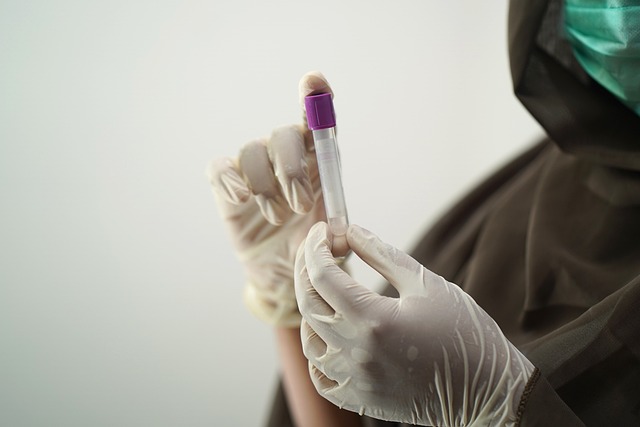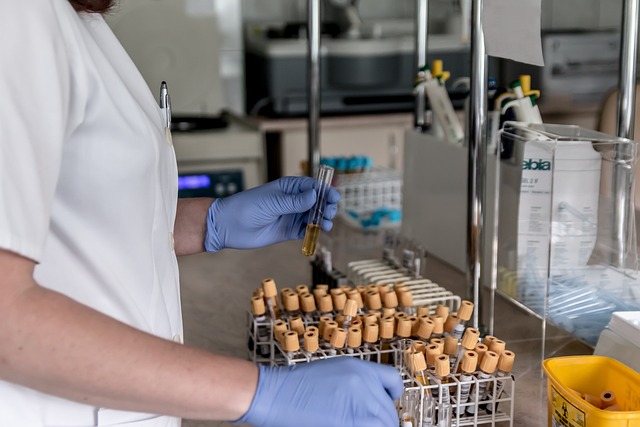The article discusses the prevalence of iron deficiency anemia and its impact on oxygen transportation within the blood, with factors such as poor dietary intake, increased iron needs during growth or pregnancy, and chronic blood loss contributing to its occurrence. A comprehensive understanding of iron deficiency anemia is crucial for effective management and treatment. The UK has made significant strides in healthcare diagnostics with the introduction of home-based blood testing services for iron deficiency anemia, which provide accurate and reliable results without the need for clinic visits. This innovation not only improves patient comfort but also enhances accessibility, enabling individuals to monitor their iron levels conveniently at home and seek timely treatment. The UK's home blood testing system is a testament to its commitment to leveraging technology and innovation in healthcare delivery, offering secure, efficient, and empowering health monitoring alternatives. This service, accessible through the NHS or private healthcare providers, includes a simple at-home testing kit that allows for painless finger-prick sample collection, with results interpreted by healthcare professionals and tailored advice provided for individual care management. Keywords: Blood test at home UK, iron deficiency anemia detection, healthcare accessibility, patient empowerment.
Identifying iron deficiency anemia is pivotal for maintaining health and well-being. Blood tests, a cornerstone in medical diagnostics, offer a reliable method for detecting this condition. With advancements in healthcare, the convenience of home blood testing for iron deficiency anemia has become readily accessible in the UK. This article delves into the significance of these tests, exploring how they facilitate easier diagnosis and management of the condition from the comfort of one’s home. Understanding the process and its benefits is key to leveraging this healthcare advancement effectively.
- Understanding Iron Deficiency Anemia and the Role of Blood Tests in Diagnosis
- The Convenience of Home Blood Testing for Iron Deficiency Anemia in the UK
- Step-by-Step Guide to Undergoing a Blood Test at Home for Iron Deficiency Anemia in the UK
Understanding Iron Deficiency Anemia and the Role of Blood Tests in Diagnosis

Iron deficiency anemia is a common condition characterized by insufficient iron levels in the body, leading to a reduced ability of the blood to carry oxygen. This can result from various factors, including dietary deficiencies, increased iron requirements during periods of growth or pregnancy, or chronic conditions causing blood loss. A comprehensive understanding of iron deficiency anemia is crucial for effective management and treatment. Blood tests play a pivotal role in detecting this condition by measuring the levels of hemoglobin, hematocrit, mean corpuscular volume (MCV), serum ferritin, and transferrin saturation. Among these, serum ferritin is often the first test used to screen for iron deficiency as it correlates with body iron stores. In the UK, individuals can conveniently undergo a blood test at home through services designed to provide accurate and reliable results without the need for in-clinic visits. This approach not only enhances patient comfort but also ensures accessibility, making it easier for individuals to monitor their iron levels and receive timely treatment when necessary. The availability of at-home blood tests for iron deficiency anemia detection is a testament to the advancements in healthcare diagnostics, offering convenience and precision that align with modern lifestyle demands.
The Convenience of Home Blood Testing for Iron Deficiency Anemia in the UK

In the United Kingdom, the advent of home blood testing has revolutionised the way individuals manage their health, with iron deficiency anemia detection being no exception. The convenience of conducting a blood test at home in the UK cannot be overstated; it eliminates the need for patients to travel to and from clinics, often saving precious time that can be better spent on daily activities or work. This home-based testing allows individuals to undergo regular screenings with ease, facilitating early detection and treatment of iron deficiency anemia, which is crucial for maintaining overall health. The process is straightforward: a finger-prick blood sample is collected using a kit that can be ordered online or obtained through the NHS. This sample is then sent to a certified laboratory for analysis, with results typically available within a few days directly to the patient or their healthcare provider.
The availability of home blood testing kits for iron deficiency anemia in the UK is a significant step forward in healthcare accessibility and patient empowerment. By leveraging advanced courier services and secure digital platforms, these tests ensure that personal health data remains confidential while undergoing analysis. This service not only caters to individuals with busy schedules but also to those with mobility issues or living in remote areas where medical facilities are scarce. As such, the home blood testing option for iron deficiency anemia detection is a testament to the UK’s commitment to improving healthcare delivery through innovation and technology.
Step-by-Step Guide to Undergoing a Blood Test at Home for Iron Deficiency Anemia in the UK

For individuals in the UK seeking to detect iron deficiency anemia from the comfort of their own home, a blood test at home option is available. This convenient service allows for the assessment of your iron levels and overall health status without the need to travel to a clinic or hospital. The process begins with ordering a home testing kit authorised by the National Health Service (NHS) or through private healthcare providers. Upon receipt, follow the included instructions carefully. Typically, you’ll be asked to prick your finger to obtain a drop of blood, which you then place on a test strip contained within the kit. Ensure that your hands are clean and dry before performing the finger-prick; this is crucial for accurate results. After collecting the required amount of blood, apply it to the test strip as directed. The kit will usually have a lancet to assist with the finger-pricking process, which is designed to minimise discomfort.
Once you’ve provided a sample, seal the test strip in the prepaid envelope provided and send it back to the laboratory using the supplied shipping label. The lab will then analyse your blood for iron levels, along with other related markers such as ferritin and transferrin saturation. A healthcare professional will review the results and, if necessary, provide a diagnosis and recommend a course of treatment or dietary changes to address any deficiencies. It’s important to follow the lab’s instructions precisely and complete the test within the time frame indicated to ensure the accuracy of your results. After the analysis is complete, you will receive a comprehensive report detailing your iron levels and whether you are anaemic. This report should be discussed with your GP or healthcare provider for the best personalised care and guidance on managing iron deficiency anemia.
Blood tests have become an indispensable tool in the diagnosis of iron deficiency anemia, offering a non-invasive and accessible method for individuals in the UK. The convenience of conducting these tests at home has significantly improved patient compliance and early detection rates. With clear guidance on how to properly undergo a blood test at home, patients can now monitor their iron levels with greater ease, ensuring timely management of this common condition. This advancement not only enhances the patient experience but also contributes to the broader public health efforts in the UK by enabling early intervention and better outcomes for those affected by iron deficiency anemia.
